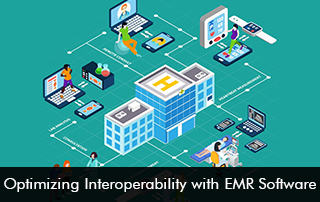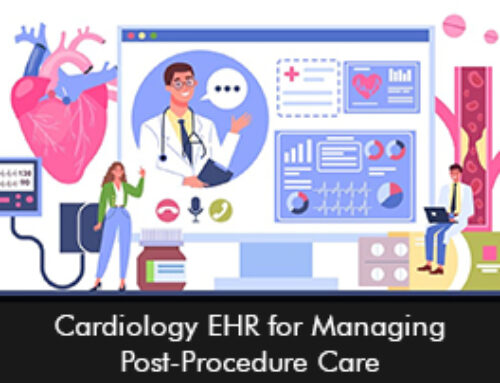Interoperability is the foundation of modern healthcare. Electronic Medical Records (EMR) Software interoperability ensures the seamless exchange of patient data between different systems. When interoperability is optimized with EHR Software, healthcare providers can swiftly and effectively use patient data whenever they need to boost patient care delivery. Care coordination is also supported with optimized interoperability, which helps different medical specialists stay on the same page.
How to Improve EMR Software Interoperability?
Here are five key tactics that can be implemented for better Electronic Health Records (EHR) Software interoperability:
Strategy One – Adopting Uniform Data Formats
For smooth data transfer, healthcare organizations should embrace uniform data formats like HL7, FHIR, and CCD. These common standards allow EMR Software to interact effectively across various software systems.
Strategy Two – Connecting with Health Information Exchanges (HIEs)
Health Information Exchanges (HIEs) allow for the confidential sharing of patient records among hospitals, clinics, and specialists. When EHR Software is connected with HIEs, healthcare providers can access patient histories instantly. This cuts down on unnecessary tests and leads to better diagnoses and even saves costs.
Strategy Three – Leveraging APIs for Effortless Integration
APIs empower Electronic Medical Records Software to communicate with external applications like telehealth services and wearable fitness trackers. This API-fueled compatibility facilitates more adaptable and extensive data exchange across different healthcare technologies.
Strategy Four – Transitioning to Cloud-Based EMR Systems
Cloud-based EHR Software improves interoperability by granting remote access to patient records, all while maintaining data protection and adherence to regulations. Cloud environments enable instantaneous updates and cooperation among healthcare providers spread across multiple sites.
Strategy Five – Meeting Regulatory Standards
For EMR Software interoperability, the software systems must adhere to different regulatory standards such as HIPAA and 21st Century Cures Act. Meeting these standards enables data to be shared efficiently and ensures patient data protection.
Advantages of EHR Software Interoperability
- Improved patient care with up-to-date patient data at the point of care.
- Electronic Health Records (EHR) Software interoperability facilitates providers to coordinate care, which enhances overall healthcare delivery by reducing any fragments in care.
- When data exchange is electronic, workflow efficiency increases, there are no time lags involved.
Connected healthcare can only be achieved by optimized EMR Software interoperability. Such a healthcare model can boost health outcomes and ensure personalized care for everyone.




